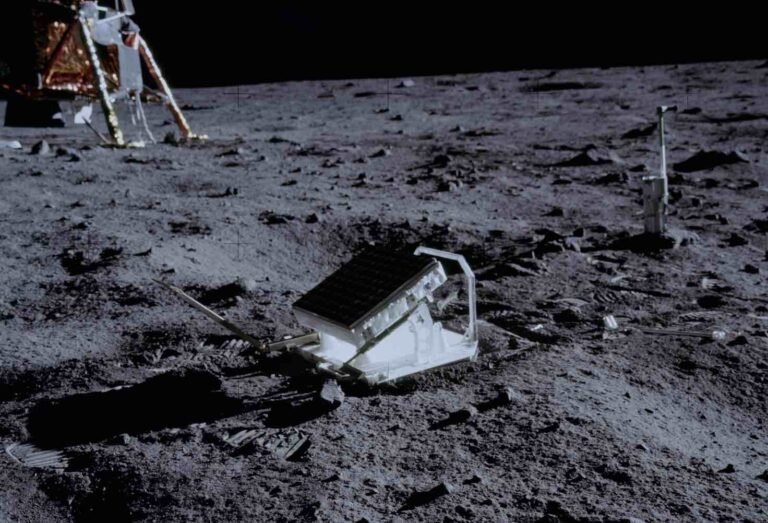In 2020, the Physics Nobel Prize was awarded to Andrea Ghez and Reinhard Genzel for confirming the existence of a massive black hole, Sagittarius A* (abbreviated Sgr A*), at the center of the Milky Way Galaxy. The motion of stars at a few percent of the speed of light at a distance of Pluto from the Sun implies that Sgr A* weighs four million Suns. During the infancy of the Milky Way, the black hole grew in mass mostly by devouring gas and stars, but also through mergers of smaller black holes as the belly of the Milky Way digested other galaxies. Did any of these growing pains affect our immediate cosmic neighborhood near Earth?
A simple calculation shows that during the most vigorous episodes of gas accretion, the flux of X-rays from Sgr A* would have reached the X-ray illumination level that Earth receives from the Sun. But over the past two centuries SgrA * had been relatively dormant, shining in X-rays at less than a millionth of its maximum attainable luminosity. Given its weakness in emitting light, would we notice if two invisible black holes merged at the Galactic center?
In a new paper, I showed that a merger of massive black holes in the Galactic center permanently displaces the Moon by a fraction of a millimeter away from Earth. The merger radiates a huge amount of energy, equivalent to a tenth of the millions of solar masses in the merging black holes, in a pulse of gravitational waves that lasts less than a few seconds. This pulse takes more than a second to traverse the Earth-Moon separation. As a result, the Moon witnesses the peak of the pulse at a different time than Earth.
By coincidence of numbers, the shift in the local gravitational potential induced by the gravitational wave pulse could be comparable to the gravitational potential that binds the Moon to Earth. During the passage of the pulse, the forceful tug of the Earth on the Moon would weaken. As a result, the Moon would recede slightly from Earth. Altogether, the gravitational wave passage leaves behind a permanent displacement of the Moon. One can also show a scar of similar magnitude imprinted on the local spacetime by the gravitational wave passage, which was first noticed in a 1974 paper by the physicists Yakov Zel’dovich and Alexander Polnarev and was dubbed the “memory effect” in later studies.
The memory effect of gravitational radiation is subtle, as it moves the Moon away from Earth by merely a fraction of a millimeter. Albeit small, this permanent displacement is detectable by the Lunar Ranging laser system, which monitors the Earth-Moon separation by measuring steadily the roundtrip travel time of light to the Moon. Half a century ago, the retro-reflectors that return the laser light were first installed on the lunar surface during the Apollo program (11, 14, and 15) and Lunokhod 1 and 2 missions.
In the past, Lunar Ranging was used to validate the theory of gravity formulated by Albert Einstein in 1915 to exquisite precision, after removing the variations in the Earth-Moon distance due to periodic gravitational tides. My new paper shows that the same Lunar Ranging system can be used to detect gravitational radiation from the merger of massive black holes at the Galactic center. In 2017, the Physics Nobel Prize was awarded to Rai Weiss, Barry Barish, and Kip Thorne, who led the LIGO discovery of gravitational waves from mergers of lower-mass black holes that form out of the collapse of massive stars.
A pair of black holes with half the mass of Sgr A* would merge within a decade if separated by Jupiter’s distance from the Sun. The nearest stars to Sgr A* are much farther away and cannot be used to rule out the existence of such a tight black-hole binary.
Remarkably, the gravitational-wave pulse from massive black holes at the Milky Way center is so intense – that it can displace the Moon to a detectable level within the split of a second. The speed by which the Moon is moved away from Earth is comparable to the walking speed of an ant, but the Moon is 10 to the power of 26 times more massive than an ant, and displacing it should not be taken lightly. Indeed, it requires a major force of nature, the inevitable force majeure: gravity. Without it, we would never exist and the universe would have been very boring.
Avi Loeb is the head of the Galileo Project, founding director of Harvard University’s – Black Hole Initiative, director of the Institute for Theory and Computation at the Harvard-Smithsonian Center for Astrophysics, and the former chair of the astronomy department at Harvard University (2011-2020). He chairs the advisory board for the Breakthrough Starshot project, and is a former member of the President’s Council of Advisors on Science and Technology and a former chair of the Board on Physics and Astronomy of the National Academies. He is the bestselling author of “Extraterrestrial: The First Sign of Intelligent Life Beyond Earth” and a co-author of the textbook “Life in the Cosmos”, both published in 2021.

